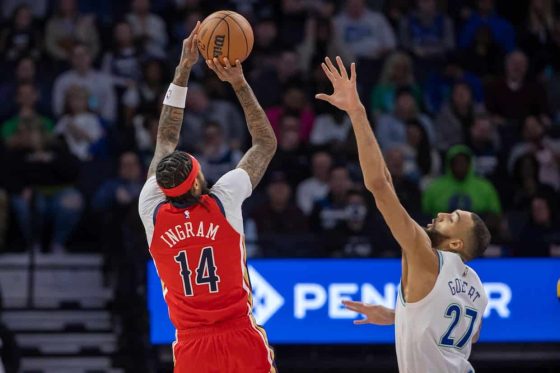NBA
The New Orleans Pelicans showed us how you can win with bad spacing

Key Highlights:
- In sports, having good spacing makes everything easier
- But just because you don’t have good spacing doesn’t mean you can’t win
- The Pelicans showed us that you can combat bad spacing through effort, physicality, and tough shot-making
I’ve been watching basketball for a long time. And usually, when you do something for a long time, it loses its luster. But basketball hasn’t lost its ability to bring me joy in large part because I’m always learning something new. And when I watched the Wednesday showdown between the New Orleans Pelicans and Minnesota Timberwolves, I was taken back to school.
Spacing Is Important
In basketball (and all team sports, for that matter), spacing is important. On offense, you want to create as much space as possible. And on defense, you want to limit space as much as possible.
Typically, the best teams have great spacing, and the worst ones have poor spacing. This is especially true in the playoffs where you will often see the winner of the series be the team that won the spacing battle.
Minnesota’s Plan Against New Orleans
One of the best ways to have good spacing is to field as much shooting as possible. As the 27th-ranked team in 3-point attempts, the Pelicans don’t have a ton of shooters on their roster. So, their spacing is relatively bad.
To exploit this, opponents will try to place their best rim protectors on New Orleans’ non/poor shooters so that they can sag off them and protect the paint (this is normally how you limit space).
However, since the Pelicans have a human freight train in Zion Williamson, this strategy doesn’t work unless you have the requisite size to properly wall off the paint. If you are too small (like, say, the Sacramento Kings), then Williamson will bulldoze through you anyway.
The Timberwolves have the size necessary to properly safeguard the interior (which is a big reason why their defense is so great). So, against New Orleans, Minnesota placed their big bodies on New Orleans’ worst shooters and instructed them to shade toward the paint. Like this:
No Space, No Problem
This brings us to the all-important lesson I learned from this game. You see, spacing is a lot like money. It isn’t everything, but it makes everything a lot easier. Having good spacing makes playing high-level offense a lot easier. It makes being a good team easier. But, like money, just because you don’t have it doesn’t mean that you should just throw in the towel.
We need to remember that these are professional athletes/coaches that are participating in this game. You don’t get to where they are without grading in the 99th percentile in competitive fire. And they aren’t going to give up trying to win just because they don’t have enough shooting to space the floor properly. Think about how the Miami Heat seem to always make deep playoff runs despite often playing two/three non-shooters on the court at a time.
And on Wednesday, the Pelicans demonstrated three ways to get buckets without having good spacing. You can see an example of each in the video montage below:
The first way to combat bad spacing (the first clip in the montage above) is through sheer effort. As a general rule, you can mitigate the damage of any weakness by just working harder than your opponent. Here, despite three Timberwolves’ defenders being in the paint, Williamson fights to secure the offensive rebound and is rewarded with two easy(ish) points.
The second way to do it (second clip) is through physicality (a Heat special). It doesn’t matter how many bodies are in the paint. If you are strong in your drives/cuts, you can still carve out a high-value shot. Here, Williamson takes a power dribble plus spin move into the paint and hits Larry Nance Jr. (who works hard to seal Kyle Anderson) for a layup.
The third way to score with bad spacing (third clip) is through tough shot-making. Great tough shotmakers don’t care if the paint is packed because hitting contested jumpers is their livelihood. Brandon Ingram and CJ McCollum are two of the best in the business at this practice, and they put on a tough shot exhibition against Minnesota (combining for 43 points on 15 of 27 shooting from the floor).
We’d be remiss not to mention that the Pelicans were the beneficiary of some outside shooting luck. Through three quarters (the competitive portion of this game), the Pelicans shot 45% from downtown, while the Timberwolves shot just 26%. But even with that caveat in mind, what they accomplished against Minnesota deserves recognition.
In the ideal world, you want to have as much spacing as possible. But with cap restrictions and limited roster spots, it is very hard to live in an ideal world in sports. There will always be teams with less space than others.
And if you happen to be one of those unfortunate teams, it doesn’t mean that everything is hopeless. There are numerous ways to work around it. Just ask the Pelicans.














